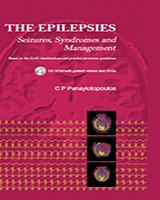From: Chapter 2, Optimal Use of the EEG in the Diagnosis and Management of Epilepsies

NCBI Bookshelf. A service of the National Library of Medicine, National Institutes of Health.

Top: proper use of EEGs. This girl gave a clear-cut history of two seizures that, on clinical grounds, had all the elements of focal motor seizures. Her eyes first and then her head turned to the left and ‘I could not bring them back to normal’ for 2 min. The EEG clearly documented that she had generalised not focal epilepsy.
Bottom: misuse of the EEG. A 26-year-old woman with JME had the onset of seizures at age 13 years. These consisted of brief absences with eyelid jerking. Her first EEG documented the epileptic nature of the attacks, but the reporting physician and the EEG technologist considered the discharges as artefacts produced by the concurrent eyelid jerking. The EEG was erroneously reported as normal.
From: Chapter 2, Optimal Use of the EEG in the Diagnosis and Management of Epilepsies

NCBI Bookshelf. A service of the National Library of Medicine, National Institutes of Health.